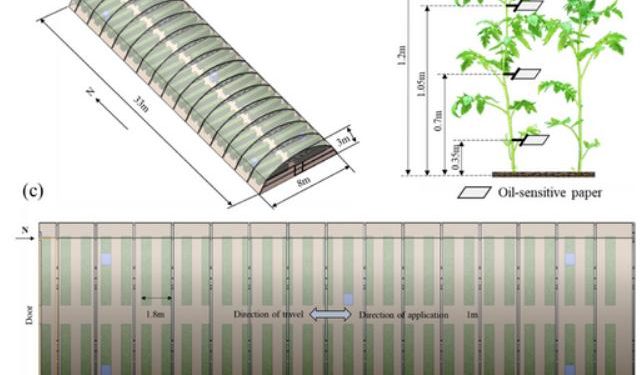The use of pesticides in greenhouse vegetable cultivation is necessary and significant. However, traditional pesticide application methods such as the use of backpack sprayers with water-diluted pesticides have certain drawbacks, e.g., uneven distribution, high labor intensity, and safety risks.
Fluazinam ultra-low-volume liquids (Flu-ULVs) were prepared using oily solvents as carriers. The effects of different oils on the physical properties of the preparations were investigated. The Flu-ULV can be sprayed directly using a hand-held ultra-low-volume (ULV) sprayer without dilution with water. Compared with commercial water-based suspension concentrates of fluazinam, the Flu-ULV samples showed better wetting of tomato leaves, better atomization, and more uniform droplet distribution. At a dosage of 300 mL/ha, the coverage rate of tomato leaves ranged from 32.47% to 79.3%, with a droplet deposition density of 556 to 2017 droplets/cm2. Application of Flu-ULVs provided 70.86% control efficacy against gray mold in tomatoes, which was higher than those achieved with reference products. Dermal exposure to Flu-ULVs was also evaluated in greenhouse experiments. The coverage rates for all parts of the operator’s body ranged from 0.02% to 0.07%, with deposition volumes of 2.23 to 12.26 μg/cm2.
Reference: Ma, J., Xiang, S., Shi, Y., Xie, X., Chai, A., Li, L., Li, B. and Fan, T. (2024), Application of ultra-low-volume spray for the control of vegetable disease in greenhouse: Investigation of formulation performance and potential dermal exposure. Pest Manag Sci, 80: 2761-2772. https://doi.org/10.1002/ps.7983












